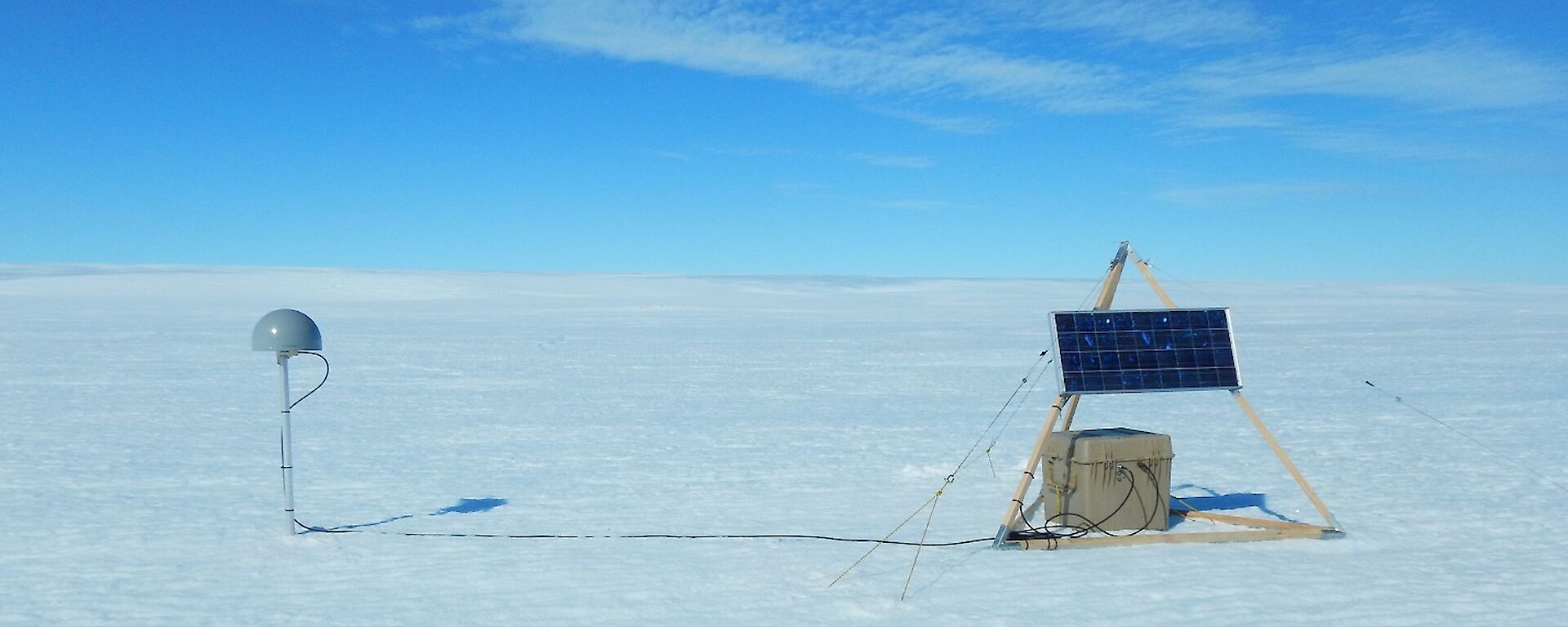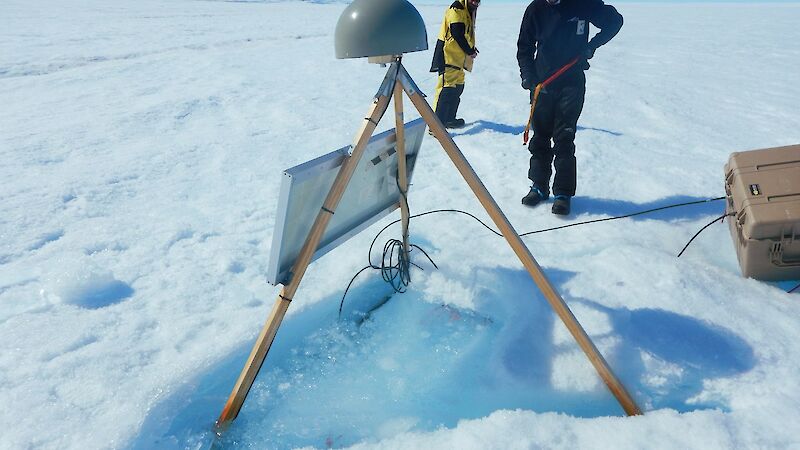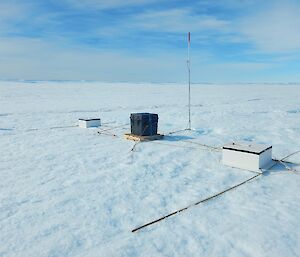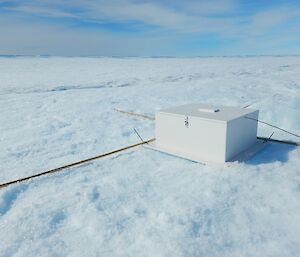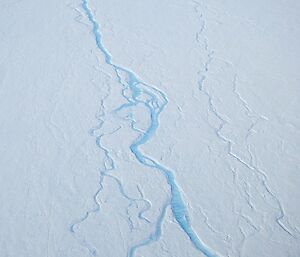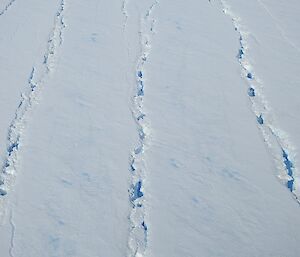18–24 January 2017
After finding our equipment damaged by water a few weeks ago, a lot of time has been spent on station redesigning it to withstand the wet summer conditions. Both the GPS and ApRES (autonomous phase-sensitive radar) units have been used on multiple field programs around the continent, and have been highly designed to handle cold Antarctic conditions. What they were never intended to deal with is water!
The GPS modifications were relatively simple; the original pyramid frame had melted a large pool of water which made an unsteady base for the antenna. The antenna has now been moved to an aluminium pole sunk deep into the ice, which will make for a firm and stable support. The pyramid is still used for the solar panel power source, which is less sensitive to small movement.
The ApRES radar was a lot more difficult to redesign. The two antennas which transmit and receive the radar signal were originally designed to be buried, but any buried equipment on the Sørsdal Glacier quickly fills with water. However, if we leave them on the surface they will be exposed to the gale force winds in the region over winter. Even worse, the boxes have to remain upright and in contact with the surface of the ice at all times.
After a lot of head scratching and talking round in circles, we came up with a trial setup. The carpenters on station generously built us some robust plywood boxes to house the antennas, which we hope will be able to stand up to even the strongest winter winds. These are lashed to bamboo canes to help hold them upright, without allowing them to become suspended above the surface of the ice. The whole setup is then anchored down tightly and lashed together. It’s not the tidiest fieldwork site I’ve ever worked with, but we hope it will stand up to the conditions.
With a bit of luck we’ll get back to the site before we leave station to see how well the redesigned equipment has worked. It’s moments like these that you really appreciate the knowledge and experience of the station community. It’s a given with fieldwork that however much planning you put into a project, something unexpected always happens once you’re out in the field. We would never have been able to adapt our equipment so easily or so well without the support of the station tradesmen and engineers, so a big thanks to them and fingers crossed!
Dr Sue Cook

